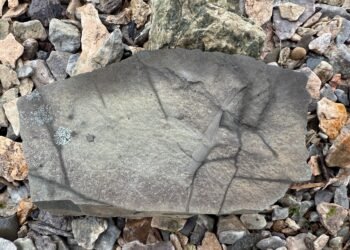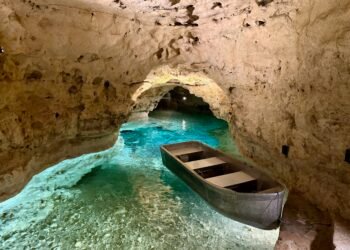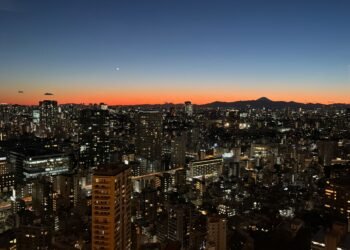In East Java, Indonesia, lies Kawah Ijen – a crater where blue flames flicker in the dark, an acid lake shimmers at dawn, and miners toil in toxic clouds. This midnight trek reveals a hell-on-Earth where adventure meets volcanic science.
1 My Midnight Ascent of Kawah Ijen
I’ve always been spellbound by landscapes that challenge my understanding of nature – places where scientific facts and raw experiences fuse to create unforgettable memories. When I first watched a documentary about the sulfur miners of Kawah Ijen in Indonesia, I knew I had to stand at the crater’s edge one day. Stories of miners toiling in sulfur-laden air, the promise of turquoise waters in the caldera’s lake, and the legendary blue flames dancing in the night captured my imagination.
On a drizzly January night, armed with curiosity and excitement, I joined a midnight tour from the city of Banyuwangi in East Java. Over the course of several hours, I battled fatigue, the biting chill of high-altitude winds, and unpredictable rain to witness how science, human resilience, and nature’s wonder merge at Kawah Ijen’s volcanic landscape.
2 Quick Facts About Kawah Ijen
- Location: East Java, Indonesia.
- Type: Composite volcano (part of the Ijen Volcano Complex).
- Last Eruption: 1999 (monitored closely due to ongoing volcanic activity).
- Elevation: 2,799 metres (9,183 feet) above sea level.
- Trek Duration: 1.5–2 hours to reach the crater rim.
- Crater Lake pH: Approximately 0.2 (highly acidic).
- Temperature at the Rim: Can drop to ~10°C (50°F) before sunrise.
- Key Attraction: Turquoise acid lake & elusive blue fire – the flame of the burning sulfuric gases.
- UNESCO Status: Included within the Kawah Ijen UNESCO Global Geopark for its outstanding volcanic landscapes and cultural significance.
- Local Workforce: Sulfur miners carrying up to 70–90 kg of sulfur per trip.
3 Why Kawah Ijen is World-Famous
Kawah Ijen draws travelers and scientists alike with phenomena found in only a handful of places on Earth.
- Blue Fire: At night, burning sulfuric gases ignite into rare electric-blue flames – a phenomenon seen in only a few volcanoes worldwide.
- Turquoise Crater Lake: The world’s largest acidic lake, with a pH close to battery acid, glows a brilliant turquoise at sunrise.
- Sulfur Miners: Local miners carry 70–90 kg loads of bright yellow sulfur up steep slopes using simple tools and minimal protection.
- UNESCO Geopark: Part of the Ijen Volcano Complex, Kawah Ijen is recognized for its unique geology and cultural heritage.
This mix of otherworldly science and human resilience makes Kawah Ijen unlike any other trek in the world.
4 Planning Your Trek
Before you set out at midnight, a little preparation goes a long way. Here’s what to know about getting there, timing your visit, and tackling the hike.
How to Get to Kawah Ijen
Most treks to Kawah Ijen begin from Banyuwangi, a coastal city in East Java and the closest gateway to the volcano. Banyuwangi is just an hour’s drive from the trailhead and has plenty of guesthouses, restaurants, and tour operators. Some travelers instead base themselves in Bondowoso, a quieter inland town that offers a less touristy experience, but the journey to the crater takes longer. Both towns have plenty of guesthouses and hotels – see the latest options for Banyuwangi hotels or Bondowoso hotels to suit your plans.
When I visited, I stayed in Banyuwangi. To get there I, took a minibus from Denpasar, Bali, then crossed the ferry at Gilimanuk into East Java – a short one-hour ride across the strait. From there, I grabbed a local taxi from the Banyuwangi bus station to my hotel, which made the transfer quick and straightforward.
Getting to Banyuwangi is fairly straightforward:
- From Bali (as I did): Take the ferry from Gilimanuk across the Bali Strait to Banyuwangi (about 1 hour).
- From Surabaya or Malang: Regular buses, trains, or private drivers connect to Banyuwangi, usually in 6–8 hours.
- By air: Banyuwangi’s small airport has flights from Surabaya and Jakarta.
Many visitors book a guided tour for convenience, transport, and safety gear. While I joined a small local operator, there are plenty of options to compare online – see the latest options for Kawah Ijen tours.
Some tours, especially from Bali, also include the ferry crossing and hotel pickup. Independent travelers, meanwhile, can hire a driver or rent a scooter in Banyuwangi. Prices vary widely: budget tours may start at IDR 400,000 – 700,000 (USD $30 – 45) per person, while private, all-inclusive packages cost more.
When to Visit Kawah Ijen
Kawah Ijen can be visited year-round, but conditions vary:
- Dry Season (the best season): The dry season (April to October) offers clearer skies and better chances of seeing the blue fire.
- Rainy Season: Heavy rain between November and March makes the trail slippery and can obscure the flames with steam.
The blue fire is most visible between midnight and 4:00 am when the air is cool and the sky is dark. But even then, visibility depends on wind direction, rainfall, and sulfur gas levels. Sometimes the flames are hidden altogether – so be prepared for uncertainty. When I was there in January, it was not visible and hikers not permitted to hike down to the caldera to see it.
Safety note: Sulfur gases can sting your eyes and throat. A proper gas mask (not just a paper mask) is essential. Guides typically provide these, but if you’re trekking independently, bring or rent one. Also, expect cold night temperatures (10–12°C / 50–54°F) at the rim.
Trek Logistics
The hike begins at Paltuding Basecamp, about 1,850 m (6,070 ft) above sea level. From here, the trail climbs steadily to the crater rim at 2,386 m (7,828 ft).
- Midnight departure: Most treks start around midnight to allow time to reach the rim by 2:00 – 3:00 am, when the blue fire is visible, and then watch sunrise over the crater lake.
- Hike duration: Expect 1.5–2 hours to the rim, with the descent taking about an hour. If you climb down into the crater to see the flames up close, add another hour each way.
- Trail conditions: The path is wide but steep in parts, with loose volcanic gravel. Rain makes it slippery, and sulfur fumes can drift suddenly across the trail.
- Difficulty: Moderate – doable for most fit travelers, but altitude, cold, and fumes make it tougher than it looks.
- Tours vs DIY: Many visitors book a guided tour for convenience, safety gear, and transport. Independent trekkers can enter by paying the park entrance fee (IDR 100,000–150,000 / USD $6–10) at the gate.
With the right timing, preparation, and expectations, the Kawah Ijen trek is both manageable and unforgettable – a rare mix of challenge and reward.
5 A Midnight Departure Into the Unknown
My adventure kicked off around midnight in Banyuwangi, the coastal city often considered the gateway to Kawah Ijen. Located at the eastern tip of Java – just a short ferry ride away from Bali, Banyuwangi doesn’t see as many tourists as more famous Indonesian destinations, but for me, that was part of its allure. It felt like an emerging frontier for anyone fascinated by volcanoes and off-the-beaten-path adventures.
I boarded a small tour van alongside fellow travelers – some were bleary-eyed from the late hour, others quietly excited about the prospect of an active volcano in the middle of the night. Our driver navigated through dark roads for about an hour before we arrived at Ijen’s basecamp. During the ride, I couldn’t help but recall the documentary about Ijen’s sulfur miners, who risk their health daily carrying heavy baskets of sulfur up the volcano with minimal protective gear. Now, that world was only a few kilometres away.
6 You Might Also Like:
- Mount Bromo Volcano: Geology, Caldera & Eruption Science – Trek across Indonesia’s Sea of Sand at dawn and uncover the explosive geology behind Mount Bromo’s active volcanic caldera.
- Exploring Mount Vesuvius: Science, History, Discovery – Journey to Italy’s infamous volcano, where science and history collide, from the AD 79 eruption of Pompeii to modern volcanic monitoring.
- Mauna Kea Astronomy Guide: Summit, Stargazing & Science – Stand above the clouds in Hawaii at Mauna Kea’s summit, where astronomy, ancient culture, and breathtaking stargazing come together.
7 Waiting in the Dark at Basecamp
We arrived at the basecamp shortly after 1:00 am. It was abuzz with quiet anticipation. Groups of hikers, some local and others international, lingered over steaming cups of coffee, bowls of instant noodles, or in my case, fried rice. Because it was January – well into the rainy season, conditions were unpredictable. A light drizzle would start, then stop, only to return a few minutes later. Temperatures hovered around 10°C (50°F) but felt colder in the damp, high-altitude air.

Our guide provided each of us with vital gear for the trek: a headlamp to see in the dark, an N95 mask for filtering sulfuric fumes, and a thin plastic raincoat in case the drizzle turned into a downpour. The damp chill made it clear that having a spare dry layer of clothing in my pack was a smart move.
By 2:00 am, it was time to begin. The guide called us together for a quick safety briefing, reminding us to stay alert on the slippery terrain and to use the gas mask if sulfur fumes intensified. With headlamps aglow, we set out into the inky darkness.

8 The Steep Hike to the Crater Rim
The initial trail to the crater rim gains hundreds of metres in elevation within a fairly short distance, making it a steep, demanding climb. Despite feeling well-rested at first, my excitement caused me to push the pace quickly, and my heart pounded from both the exertion and the thrill of heading into unknown volcanic territory. The path, though well-trodden, was covered in loose ash and small rocks, requiring a steady footing.
As the climb grew steeper, I occasionally glanced back to see a trail of headlamps zigzagging up the slope behind me – a mesmerizing, ghostly sight. The only sounds were the crunch of volcanic gravel underfoot, the wind whipping across the slopes, and the occasional chatter among hikers. The darkness magnified every sensation, and for a moment, I could almost forget the real reason I was here – searching for the blue flames and the sunrise.

After about an hour of strenuous hiking, I reached the caldera’s edge. In the pre-dawn gloom, I could make out wispy clouds drifting across the crater. Visibility was poor, and the famous blue flames were nowhere to be seen. Most hikers pressed on, descending into the caldera to try to catch a better glimpse, but the rest of us waited at the rim, hoping conditions might improve.
I had heard from the guide that a geologic shift occurred the previous summer, often causing the flames to be less visible or completely hidden. While it was disappointing to miss them, I knew the sunrise would bring its own spectacle, and I was determined to save my energy for that.

9 Waiting in the Cold: A Lesson in Patience
The next two hours felt surprisingly long. I found a small erosion channel in the caldera rim to shelter from the wind. By then, my clothes were damp with sweat from the hike, and the chill set in quickly. Changing into a dry t-shirt became a small lifesaver, providing immediate warmth. I could feel the temperature hovering around 10°C, though the wind made it feel even colder.
Occasionally, I peeked around to watch the steady stream of headlamps inching closer to the rim. Some trekkers from other groups stumbled back up from the crater floor, coughing from the sulfur fumes. Hearing their stories of limited or no visible blue flame, I made peace with the fact that I might not see the flickering lights I’d come to witness.
Still, I remained excited for the approaching sunrise. One of the joys of trekking up a volcano at night is that once daylight breaks, you’re treated to a dramatic reveal of the landscape you’ve been trudging through in darkness.
10 Sunrise Over Banyuwangi: The Grand Reveal
As dawn approached, the black sky took on a deep navy hue. Then, very slowly, it lightened to a soft gray, and I began to see the silhouette of the caldera wall and swirling tendrils of steam rising from vents below. Eventually, the first pale oranges and pinks glowed on the horizon, and my heart leaped at the sight.
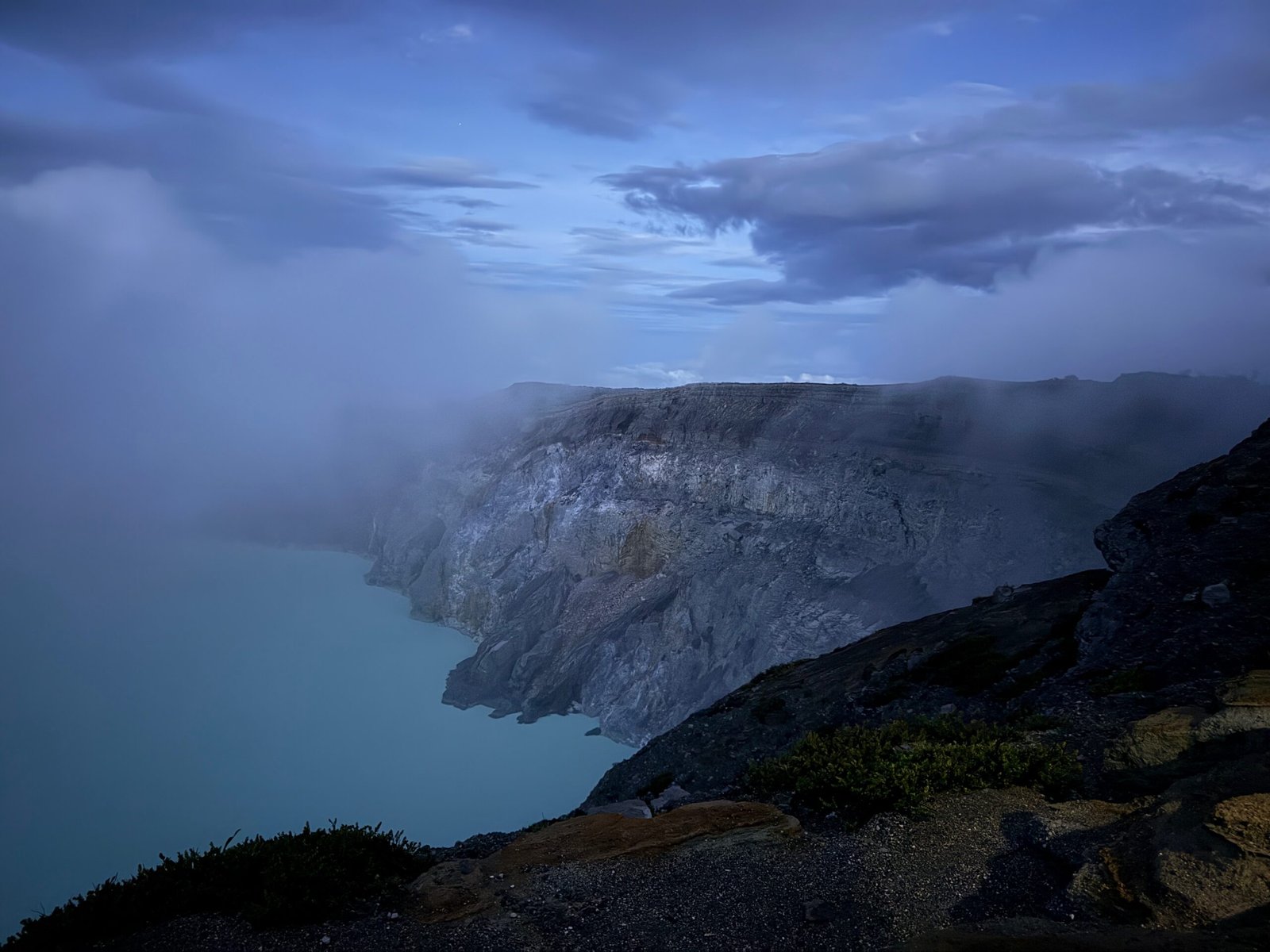
All at once, the spectacle unfolded: the turquoise crater lake lay directly before me, shimmering like a giant jewel set into the volcano. Steam rose from the sulfur vents along its shore, occasionally catching the early light and forming ephemeral rainbows. On the other side of the rim, the sun broke over Banyuwangi, illuminating the rolling terrain and farmland below. For a few moments, I simply stood there, transfixed by the beauty and the interplay of colours – icy blues, fiery oranges, and every shade in between.

Knowing the lake’s acidity is extreme, I couldn’t help but marvel at how such a dangerous place could look so enchanting. It’s one of those experiences that reminds you of the Earth’s power: the same volcanic forces that create such striking visuals also harbor gases potent enough to make your eyes burn.
11 Venturing Into the Kawah Ijen Caldera
Mesmerized as I was by the view from the rim, curiosity drove me to head into the caldera itself. To get closer to the crater lake and the sulfur vents, I had to carefully descend a steep, rocky path. The N95 mask I’d been given at basecamp became essential the minute I started down. Even with the mask, bursts of sulfur-laden steam scorched my throat and eyes whenever the wind changed direction.

Midway down, I noticed groups of exhausted trekkers heading back up, clearly worn out from the sulfur-filled air and the physically demanding climb. And then I saw them: the sulfur miners of Ijen, hauling basketloads of neon-yellow sulfur chunks. Their baskets, connected by a pole balanced across their shoulders, weighed anywhere from 70 to 90 kilograms. Yet there they were, ascending the same precarious path with hardly any protective gear. Some wore nothing more than a rag over their nose and mouth.

Seeing these miners in person made me realize that my own struggles – mild eye irritation, slightly laboured breathing, were trivial compared to what they endured daily. It was humbling. It also crystallized the fact that Ijen isn’t just a geological marvel; it’s a workplace for people whose livelihoods hinge on harvesting this mineral resource.

Eventually, the sulfur fumes became overpowering for me. My eyes watered excessively, and my throat felt raw. Although I wanted a closer look at the vents, the discomfort quickly outweighed my curiosity. I turned around and began the grueling climb back to the crater rim, stopping frequently to catch my breath in the thinning air.

12 The Return Trek: A Changing Landscape in Daylight
Reaching the crater rim again felt like a small victory. The sun was now high enough to bathe the entire volcano in light. What had been a monochromatic blur during the ascent was suddenly a vibrant panorama of slopes, ridges, and clouds swirling against the blue sky.

The descent down the main path was surprisingly quick – about 30 minutes compared to the one-hour ascent in the dark. Daylight gave me the chance to take in details missed earlier: the lush green vegetation at lower elevations, the occasional wildflowers eking out an existence in the volcanic soil, and the fleeting glimpses of local wildlife.
By the time I returned to the basecamp, the air felt warmer, and I realized just how hungry I was. A hearty bowl of soto ayam (Indonesian chicken soup) and slices of fresh fruit provided the perfect post-hike reward. Between bites, I shared stories with other trekkers and they largely had about the same experience as me. But all of us agreed: the volcanic vistas at sunrise were astonishing enough to justify the night’s exertion.
13 The Science of Kawah Ijen
Beyond the trek itself, Kawah Ijen is a living laboratory where fire, water, and rock create some of Earth’s most unusual phenomena.
Why Does the Blue Fire Burn?
Kawah Ijen’s most famous phenomenon is its blue fire – a sight so rare it exists at only a handful of volcanoes worldwide. The glow isn’t actually “blue lava” but the result of sulfur gases combusting. Beneath the crater, volcanic heat melts sulfur deposits, releasing gas that ignites when temperatures climb above 360°C (680°F).
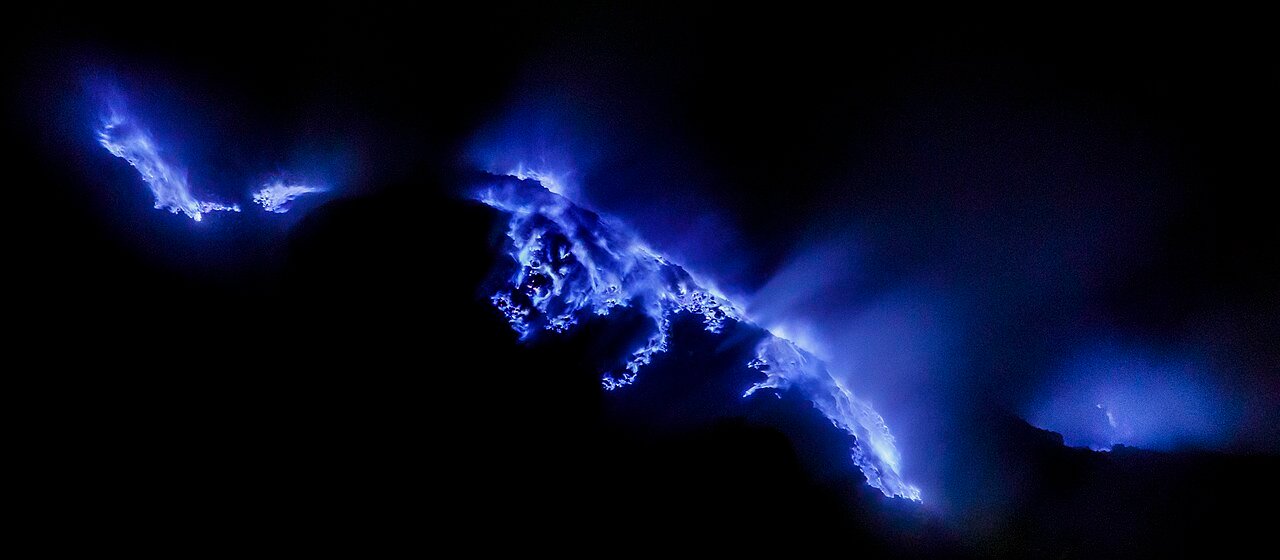
As the flames burn, they can reach several meters high. In the darkness, the escaping gases look like rivers of glowing blue liquid as they condense and flow across the rocks. Conditions have to be just right – low wind, clear night air, and active gas release, which is why even at Ijen the flames can sometimes be hidden behind steam or rain.
The World’s Largest Acidic Lake
At the heart of Kawah Ijen lies the largest highly acidic crater lake in the world. Its turquoise color masks a hostile chemistry: the lake has a pH of around 0.2, making it more acidic than lemon juice and strong enough to corrode metal.
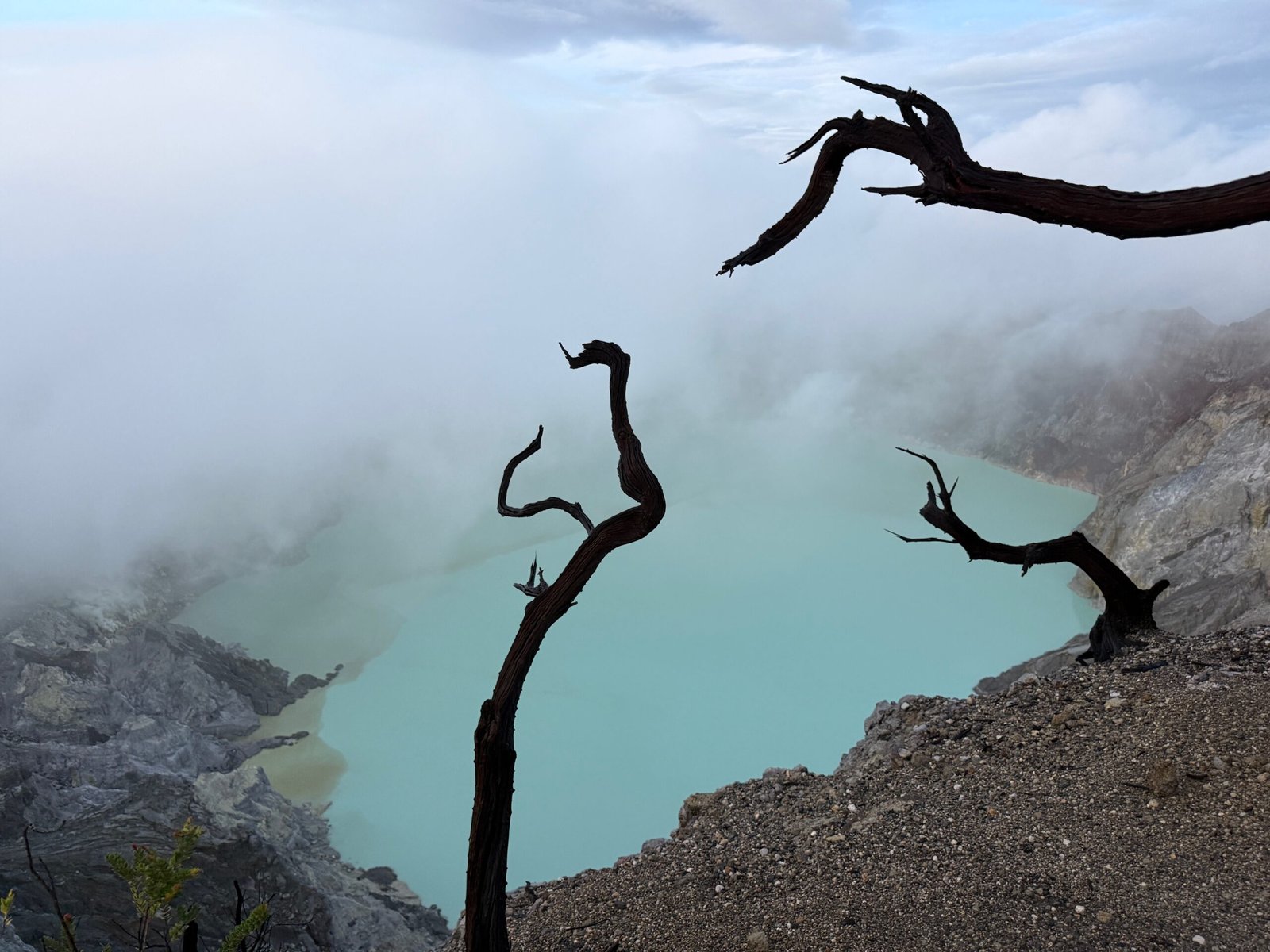
This acidity comes from hydrothermal vents beneath the lake, which pump in sulfuric and hydrochloric acids from deep within the volcano. The result is a cauldron that’s both beautiful and dangerous. On calm days, the lake shimmers like a tropical lagoon; on stormy mornings, it becomes a boiling, sulfurous haze that stings the lungs.
Scientists study the lake not only for its volcanic chemistry but also as a model for how life might survive in extreme, acidic environments on other planets.
Geology of the Ijen Volcanic Complex
Kawah Ijen is just one peak in the broader Ijen Volcanic Complex, a cluster of stratovolcanoes and calderas that dominate East Java. The landscape has been shaped by repeated eruptions, landslides, and the collapse of ancient magma chambers that left behind vast calderas.
Geologically, Ijen sits above the subduction zone where the Indo-Australian Plate dives beneath the Eurasian Plate. This tectonic collision is the same process that fuels other iconic Indonesian volcanoes like Mount Bromo and Mount Merapi.
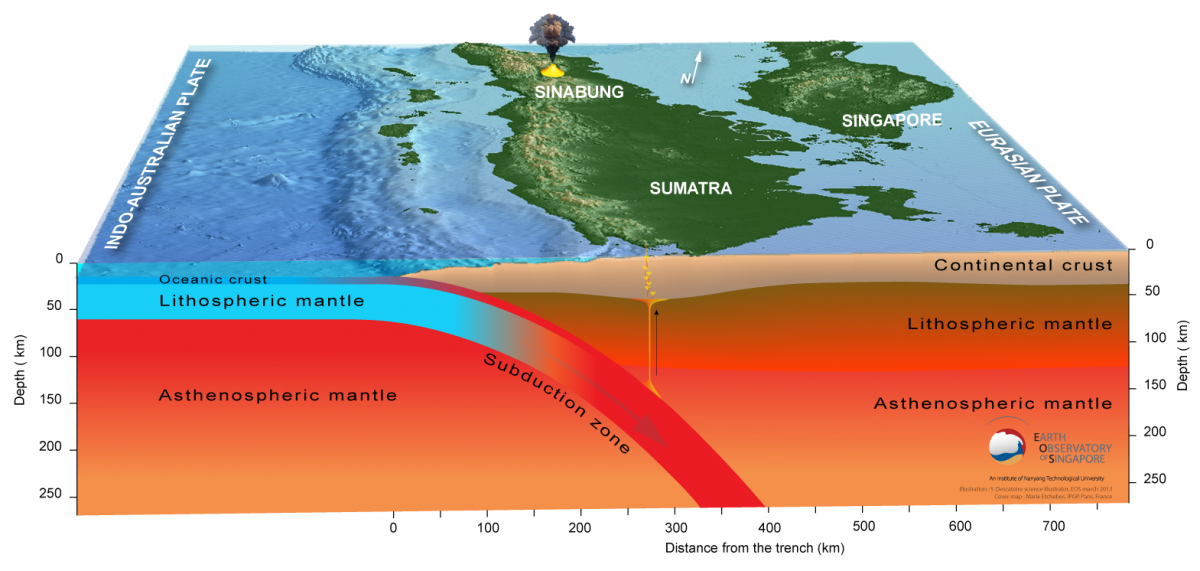
While Ijen’s most recent eruption was in 1999, the complex remains active, with frequent gas emissions, seismic activity, and ongoing monitoring by Indonesian volcanologists. Its combination of human presence, sulfur mining, and unique chemistry makes it a living laboratory where science and culture intersect.
14 Practical Travel Tips for Visiting Kawah Ijen
- Reaching Banyuwangi: If you’re visiting from Bali, take the ferry from Gilimanuk to Ketapang Ferry Port in Banyuwangi. From there, it’s an easy car or shuttle ride to most hotels or directly to the Kawah Ijen basecamp.
- Best Season to Visit: The dry season (May to September) generally offers clearer skies and less chance of rain, making for more reliable views and better hiking conditions. Visiting in the wet season (like January) can still be rewarding but be ready for rain and potential cloud cover.
- Accommodation: Banyuwangi has accommodations ranging from basic guesthouses to more upscale hotels. Staying overnight there allows you to rest up before the midnight departure to Kawah Ijen.
- Equipment and Clothing:
- Dress in layers – the climb will make you sweat, but the summit can be quite chilly.
- Pack a rain jacket and wear sturdy hiking boots with good traction, as the trail can be slippery, especially in the wet season.
- Bring a spare t-shirt or two to change into if you get sweaty on the way up.
- Fitness Level: The hike is only a few kilometres but quite steep. It’s doable for anyone with moderate fitness, but expect to stop for breathers along the way.
- Local Guides: Hiring a guide is easy, especially if you book a sunrise tour. Many guides are ex-miners, offering invaluable local knowledge and insights into Kawah Ijen sulfur industry.
- Photography: If you want night shots – especially of the blue flames, bring a camera capable of long-exposure and a sturdy tripod. For sunrise, a wide-angle lens helps capture the sweeping vistas.
- Hydration and Snacks: Carry enough water and light snacks. You can buy some at basecamp, but it’s typically more expensive, and choices might be limited.
- Money Matters: Bring small Indonesian Rupiah bills if you plan to tip your guide or miners, buy coffee, or rent any additional gear at the basecamp.
15 Pro Travel Tips
- Check Volcanic Activity Reports: If the blue flame is at the top of your wish list, speak with local guides or check the latest volcanic activity updates. Sometimes vents shift or become obstructed, making the flames harder to see.
- Consider a “Taxi Service” on the Ascent: If you’re not confident in your hiking stamina, local entrepreneurs offer “trolleys” or “taxi services” to help you up. It can be pricey, but it’s an option if you have limited time or mobility.
- Protect Your Camera Gear: Volcanic ash, rain, and sulfur fumes can be tough on electronics. Wrap your camera in protective covers, and always wipe off any dust or ash immediately after use.
- Beyond Kawah Ijen: Don’t overlook the rest of Banyuwangi and East Java. Baluran National Park (nicknamed “Africa in Java” for its savanna-like landscape) or Pulau Merah (Red Island) beach are excellent day-trip options if you’re looking to explore more of the region.
- Timing at the Crater: Plan when to descend into the caldera carefully. Going too early might leave you more exposed to thicker sulfur fumes in the dark. If you’re very keen on seeing the crater floor, balance your timing so that you’re not rushing back up just as the sun rises.
16 Plan Your Kawah Ijen Trip
Ready to plan your trip? Start with these recommended options for stays and tours around Kawah Ijen:
17 FAQs About Kawah Ijen
Can you see the blue fire every night?
No. The blue fire is not guaranteed every night. It occurs when sulfuric gases escape cracks in the volcano and ignite, creating a glowing blue flame. Conditions need to be right: darkness, dry weather, and active gas flow. Many visitors start hiking around midnight to increase their chances, but sometimes, as in my visit, the blue fire isn’t visible at all.
Is Kawah Ijen safe to hike?
Hiking Kawah Ijen is considered safe for most fit travelers, but caution is needed. The trail is steep in places, and sulfur gas near the crater can be hazardous without a mask. Tour operators usually provide gas masks for safety. Following local guides’ instructions is key to a safe experience.
Do you need a guide to climb Ijen?
A guide is not legally required, but is highly recommended. Guides provide transport, gas masks, and ensure you reach the blue fire safely in the dark. Independent hikers can enter, but navigation, gas conditions, and timing are easier with local support.
How hard is the Kawah Ijen hike?
The hike is moderate in difficulty. The main trail is about 3 km (2 miles) uphill, taking 1.5–2 hours. The steepest part is at the start, with switchbacks. Descending into the crater to see the blue fire adds challenge due to rocky footing and sulfur fumes. Average hikers can manage it with good shoes and pacing.
Is the crater lake really dangerous?
Yes. Kawah Ijen’s turquoise crater lake is the world’s largest highly acidic lake. The water has a pH close to battery acid, and swimming is strictly prohibited. Its beauty is best enjoyed from a safe distance at the crater rim. The danger comes from direct contact with the water and exposure to concentrated gases at the shore.
What kind of volcano is Kawah Ijen?
Kawah Ijen is a stratovolcano – a steep-sided volcano built up from layers of lava, ash, and volcanic debris. It sits within a large caldera on the Ijen Plateau in East Java, Indonesia. Unlike some stratovolcanoes that erupt explosively, Kawah Ijen is best known for its active sulfur vents, turquoise acidic crater lake, and occasional blue fire phenomenon.
How high is Kawah Ijen?
The rim of Kawah Ijen’s crater sits at 2,799 metres (9,183 feet) above sea level. Despite the elevation, hikers typically do not need to worry about bringing supplemental oxygen for the climb.
When did Kawah Ijen last erupt?
Kawah Ijen last erupted in 1999 and remains under close observation for signs of activity.
18 Closing Thoughts
Trekking Kawah Ijen was one of the most humbling and awe-inspiring journeys I’ve experienced. Even without the full dance of the blue flames, the sight of that vibrant turquoise lake at dawn was worth every drop of sweat and every moment of lost sleep. Watching the sulfur miners at work offered a profound look at the resilience of local communities who have adapted to these extreme conditions.
If you’re an experience-seeker with a thirst for scientific curiosity and breathtaking landscapes, Kawah Ijen delivers on all fronts. As you plan your own midnight ascent with headlamp on and gas mask at the ready, remember that the volcano’s mysteries are never guaranteed. But that, in itself, is part of the allure. You’re venturing into a place shaped by powerful natural forces, and all you can do is arrive prepared, stay safe, and embrace whatever wonders Kawah Ijen reveals.
Some links in this story are affiliate links. If you choose to buy through them, Curious Don may earn a small commission – at no extra cost to you. It helps support more science travel stories like this.




